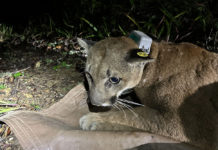
Last Monday, state fire officials updated a set of public “fire hazard severity zone” maps for our area that have reportedly been in place for more than 15 years. And a whole lot more Healdsburg land is showing up in the bright-orange and red zones this time around, indicating a growing wildfire threat for those of us who live here, especially in the Fitch Mountain vicinity and on the outskirts of town. Which might seem kind of obvious — but now it’s more official, straight from the desk of Cal Fire assessors, for what that’s worth! The Press Democrat explains:
State officials released the latest round of highly anticipated fire hazard maps Monday, covering Northern California coastal areas from the Bay Area up to the Oregon border, including Sonoma and Napa counties.
The new maps will add 1.4 million acres of land statewide into higher fire severity categories, accompanied by stricter building and local planning code requirements for property owners.
The increase in “very high” hazard areas is significant in many — though not all — areas.
Unincorporated Sonoma County saw its “very high” hazard area grow from 11 acres to 7,555 acres, with an additional 9,149 acres designated “high” hazard.
Of those, the PD reports that 73 acres here in Healdsburg are now considered “very high” hazard, up from zero acres in the previous map, and another 546 acres in Healdsburg get “high” hazard marks. To come up with these new rankings, Cal Fire mappers say they used a “science-based and field-tested model that assigns a hazard score based on the factors that influence fire likelihood and fire behavior.” They add: “Many factors are considered such as fire history, existing and potential fuel (natural vegetation), predicted flame length, blowing embers, terrain, and typical fire weather for the area.”

So what does this mean for us? State officials claim the new maps won’t affect insurance assessments. Instead, they’re supposed to serve as a guide for local government agencies to prepare for the worst, create and enforce rules toward this end, etc. Cal Fire leaders also say the maps should serve as a warning to property owners in danger zones. They explain on their “fire hazard severity zones” FAQ page: “It is your responsibility to prepare yourself, your family, and your home for when wildfire strikes. Creating and maintaining defensible space and hardening your home by retrofitting it with ignition-resistant or noncombustible materials to protect against the threat of flying embers, direct flame contact, and radiant heat exposure will dramatically increase your safety and the survivability of your home.”
I’ve reached out to the heads of the Healdsburg Fire Department, asking what these changes could mean for our city and its residents; I’ll let you know what I learn. In the meantime, there’s a lively neighbor thread running on Nextdoor about all this. And here’s more info from the PD:
Sonoma County Fire Marshal Steve Mosiurchak emphasized that “the state is handing the mandate down to the local jurisdictions.” Local officials could further tighten accompanying building restrictions but not loosen them.
The map rollout, which started earlier this month and will continue through late March, follows a Feb. 6 executive order from Gov. Gavin Newsom to better prepare the state for urban firestorms in the wake of the catastrophic Los Angeles fires.
California Insurance Commissioner Ricardo Lara, among others, has said the hazard maps won’t affect insurance decisions.
It’s the first update to the maps, which show where local governments are responsible for wildfire response, since they were developed between 2007 and 2011. Maps for areas under state jurisdiction were finalized and went into effect last year.
“It’s better more reliable data. The ability to gather impactful data between then and now changed remarkably,” said Fire Safe Sonoma CEO and President Roberta MacIntyre. “It’s just that [what] it tells us might not make everyone terribly happy.”
In conjunction, she hopes the state develops programs to help homeowners more easily undertake home hardening for wildfires similar to what’s available for earthquake retrofitting.
Note from Simone: This piece originally appeared in the weekly email newsletter I write for the Healdsburg Tribune, called Healdsburg Today. Subscribe here!











